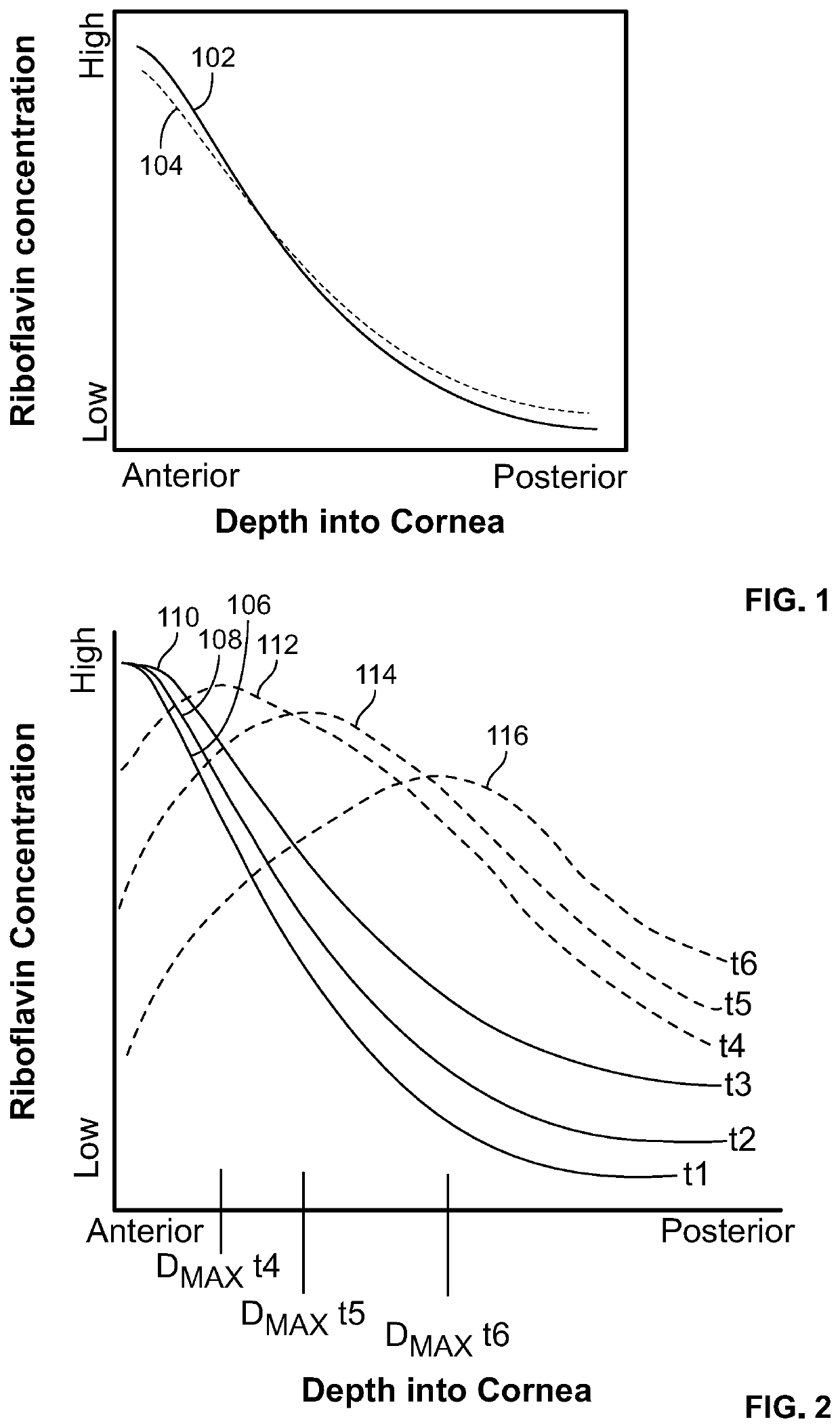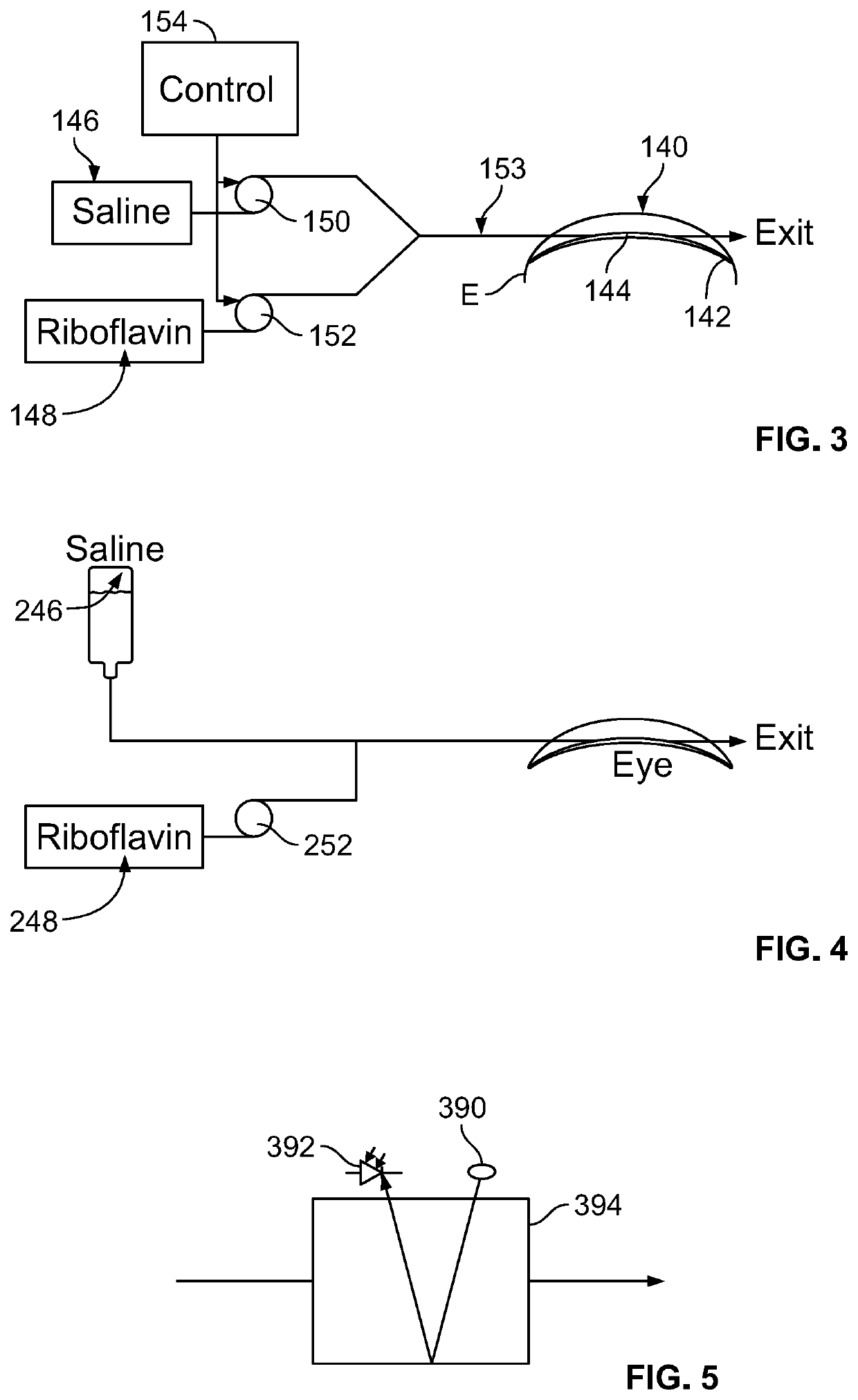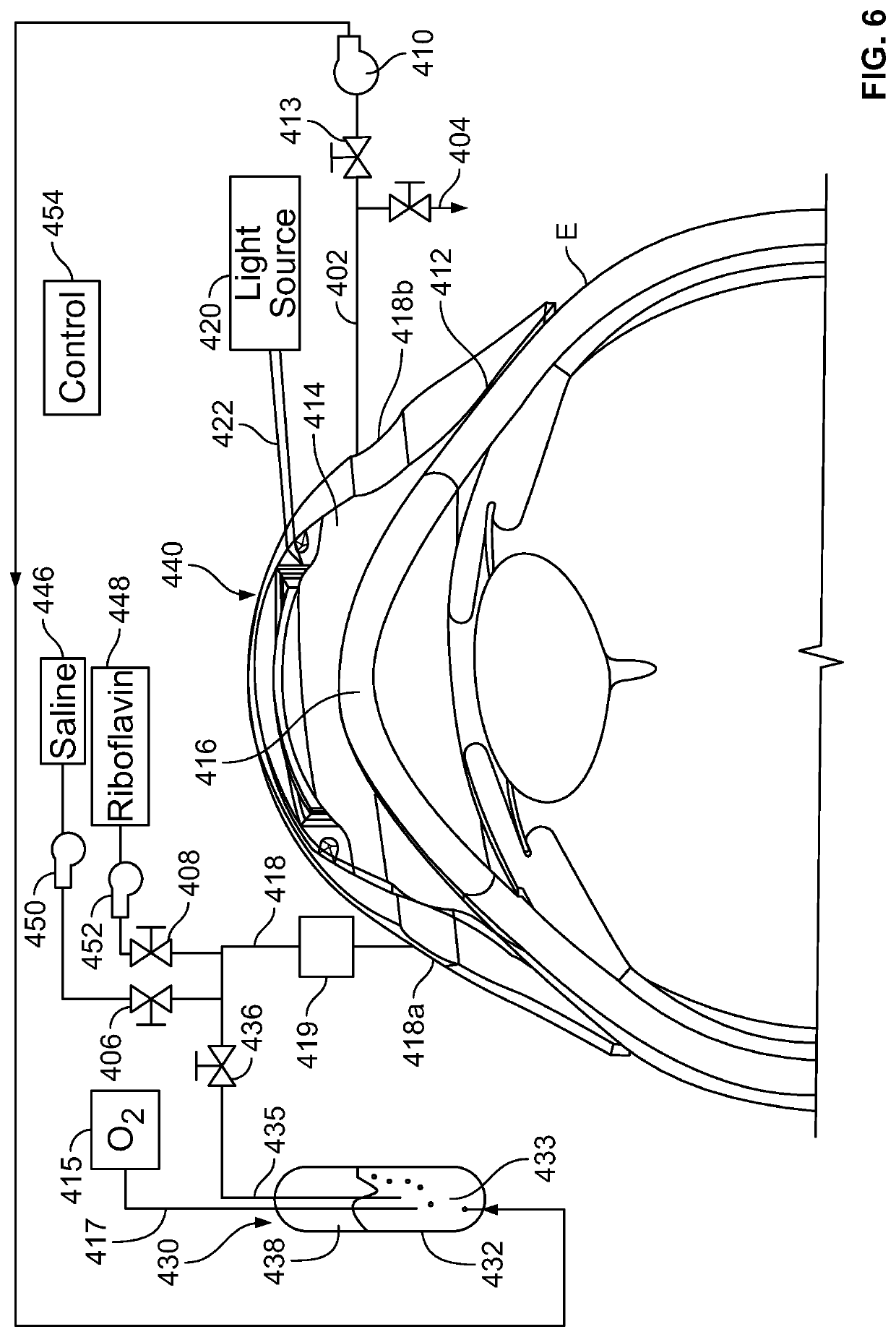Corneal Crosslinking With Catalyst Distribution Control
a technology of distribution control and crosslinking, which is applied in the field of corneal crosslinking with catalyst distribution control, can solve the problems of increasing the risk of post-operative infection, pain for patients, and eye limiting the ability to induce an elevated riboflavin concentration in the corneal stroma
- Summary
- Abstract
- Description
- Claims
- Application Information
AI Technical Summary
Benefits of technology
Problems solved by technology
Method used
Image
Examples
Embodiment Construction
[0027]One aspect of the present disclosure incorporates the realization that the riboflavin concentration profile achieved with the conventional procedure has significant drawbacks. A typical concentration profile achieved in the conventional procedure is shown by curve 102 in FIG. 1. The term “concentration profile” as used herein refers to the distribution of the catalyst versus depth from the anterior surface of the cornea at a given time. The concentration profile depicted in curve 102 is a profile which exists immediately after a cornea which is initially devoid of catalyst has been contacted with a single liquid having a fixed concentration of the catalyst. Diffusion of the catalyst into the cornea during the contact is governed by Fick's law of diffusion, with a boundary condition that at the anterior surface of the cornea, the catalyst concentration is equal to the fixed concentration of the catalyst in the solution.
[0028]In the concentration profile shown by curve 102, the ...
PUM
| Property | Measurement | Unit |
|---|---|---|
| Fraction | aaaaa | aaaaa |
| Thickness | aaaaa | aaaaa |
| Concentration | aaaaa | aaaaa |
Abstract
Description
Claims
Application Information
 Login to View More
Login to View More - R&D
- Intellectual Property
- Life Sciences
- Materials
- Tech Scout
- Unparalleled Data Quality
- Higher Quality Content
- 60% Fewer Hallucinations
Browse by: Latest US Patents, China's latest patents, Technical Efficacy Thesaurus, Application Domain, Technology Topic, Popular Technical Reports.
© 2025 PatSnap. All rights reserved.Legal|Privacy policy|Modern Slavery Act Transparency Statement|Sitemap|About US| Contact US: help@patsnap.com



